The Innovation Secrets of Steve Jobs
Carmine Gallo is a communication skills coach who works with leading companies like Intel, IBM, Chase, The Home Depot, Bank of America and others. He is the founder of Gallo Communications, a consulting firm.
In this book, Gallo talks about fundamental principles that allowed Steve Jobs to innovate brilliantly constantly. This book offers seven general principles that Steve Jobs applied to achieve genuine breakthrough success.
PRINCIPLE #1 – DO WHAT YOU LOVE: Passion is everything. Innovation is a new way of doing things that improves our lives. Innovation cannot flourish unless you are truly obsessed with making something better, be it a product, service or career. Steve Jobs says “have the courage to follow your heart and intuition. They somehow already know what you truly want to become.” Steve chooses to follow his heart through his entire career and that passion, he says, has made all the difference. It is difficult to come up with new and creative ideas that move society forward if you are not passionate about the subject.
PRINCIPLE #2 – PUT A DENT IN THE UNIVERSE: Aspire to change the world. Innovation does not take place in a vacuum. You need to know what your ultimate destination is and you need to inspire others. Steve Jobs never underestimated the power of vision to move a brand forward. He set out with a vision to change the world and he pushed through with his vision. What is your vision for your product, brand or career? If there is one fundamental characteristic that every innovator has, it is seeing things not for what they are, but for what they could be. The famous Steve Jobs’ quote of putting a dent in the universe refers to having a vision of creating what was not there before. To innovate, you have to be able to see it before anyone else does.
PRINCIPLE #3 – KICKSTART YOUR BRAIN: This appeals to creativity. Creativity leads to innovative ideas. Job believes that a broad set of experiences expands your understanding of the human experience. A more comprehensive understanding leads to breakthrough that others may have missed. Breakthrough innovation requires creativity and creativity requires that you think differently about the way you think. Steve jobs say “creativity is just connecting things.” Steve Jobs created new ideas because he spent a lifetime exploring new and unrelated things. Look outside your industry for inspiration.
PRINCIPLE #4 – SELL DREAMS NOT PRODUCTS: Your customers don’t care about your product, your brand or your company. They care about themselves, their dreams, hopes and ambitions. To win them over, you have to help them fulfill their dreams. A lot of times, people think they are crazy, but in that craziness we see genius.
PRINCIPLE #5 – SAY NO TO UNNECESSARY: Steve Jobs says “Innovation comes from saying NO to one thousand things to make sure we don’t get on the wrong track or try to do too much.” Jonathan Ive, Apple design guru says: “We are absolutely consumed by trying to develop a solution that is very simple because as physical beings, we understand clarity.” Customers demand simplicity, and that requires you to eliminate anything that clutters the user’s experience.
PRINCIPLE #6 – CREATE AN INSANELY GREAT EXPERIENCE: Don’t move product, instead enrich lives and watch your sales soar. People don’t want products, or even services for that matter. They want to know what they can do with them. Jobs has made the Apple store the gold standard in customer service by introducing genuine innovation that any business can adapt to create a deeper more emotional connection with their customer. For instance, in an Apple store, there are consultants, experts and even geniuses, but no cashier. Tony Hsieh, Zappos CEO said, “ if you just think about what makes customers and employees happy, in today’s world, that ends up being good for business as a whole.” As leaders, we are called to design a working environment in which our teams can feel themselves and be creative. Design an insanely great experience for the customers and equally for the staff members.
PRINCIPLE #7 – MASTER DELIVERING THE MESSAGE: You can have the most unique idea in the world, but if people can’t get excited about it, it doesn’t matter. Steve Jobs is considered the greatest corporate storytellers worldwide because his presentations inform, educate and entertain. There are no bullet points in Steve Jobs presentations. Instead, he thinks visually and iconically; therefore everything he touched was iconic: Apple, Pixar, iPod, iPhone, iPad, iMac and himself.
Innovation takes confidence, boldness and discipline to tune out negative voices. As Jobs said, “Don’t let the noise of others opinions drown out your inner voice.”
THE BIG THREE – KEY POINTS
Key point #1: Design amusement parks for the mind where staff members and the customer can live an excellent experience. Capture those experiences in processes and innovation will flow.
Key point #2: Innovation is for people that sound crazy. The thing about smart people is they sound crazy to dumb people. Surround yourself with crazy.
Key point #3: Never underestimate the power of vision to move a brand forward.
One Last Thing
“When you grow up you tend to get told the world is the way it is and your life is just to live your life inside the world. Try not to bash into the walls too much. Try to have a nice family, have fun, save a little money.” That’s a very limited life.
Life can be much broader once you discover one simple fact: Everything around you that you call life was made up by people that were no smarter than you and you can change it, you can influence it, you can build your own things that other people can use.
Once you learn that, you’ll never be the same again.” ~ Steve Jobs
